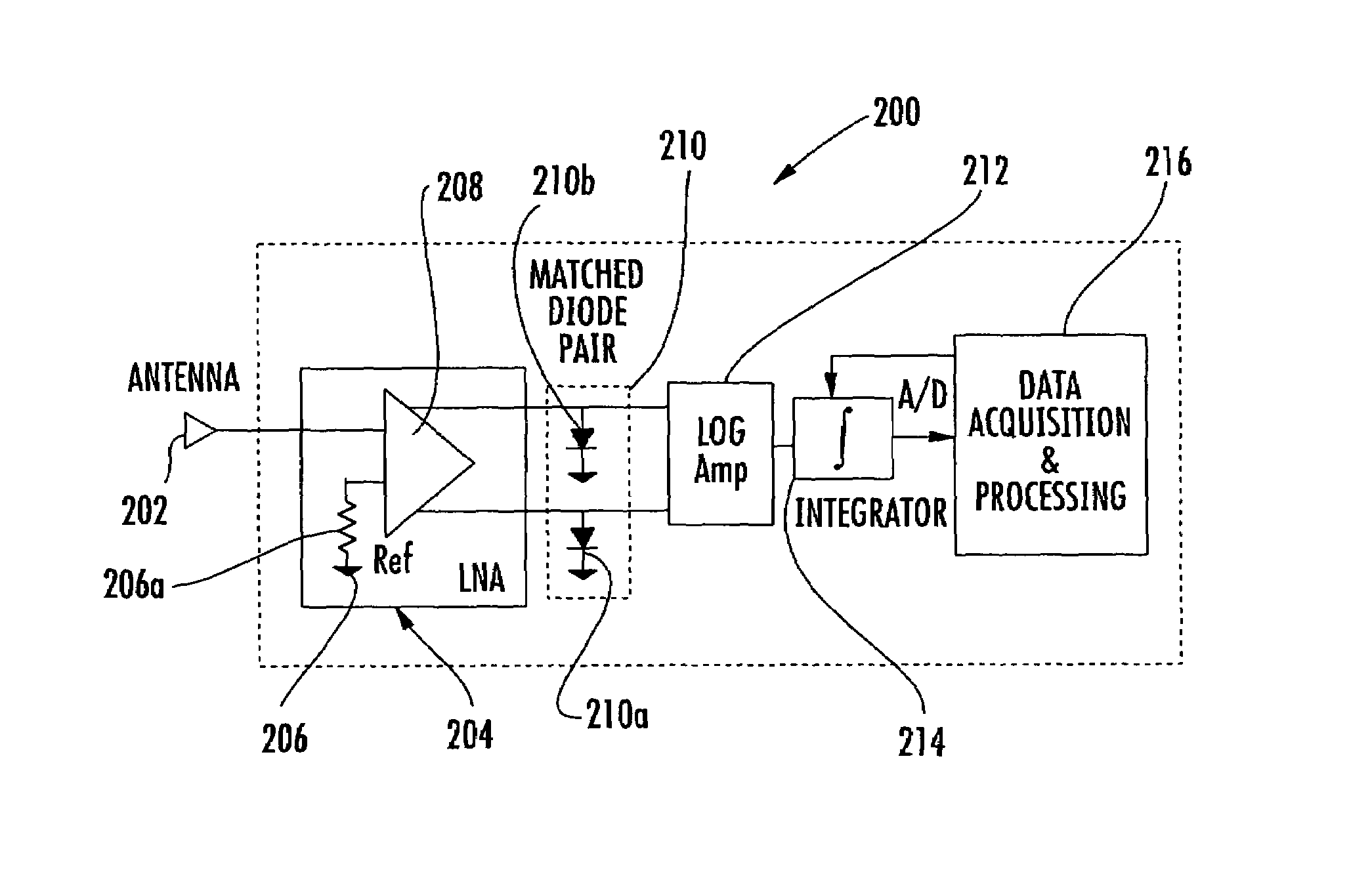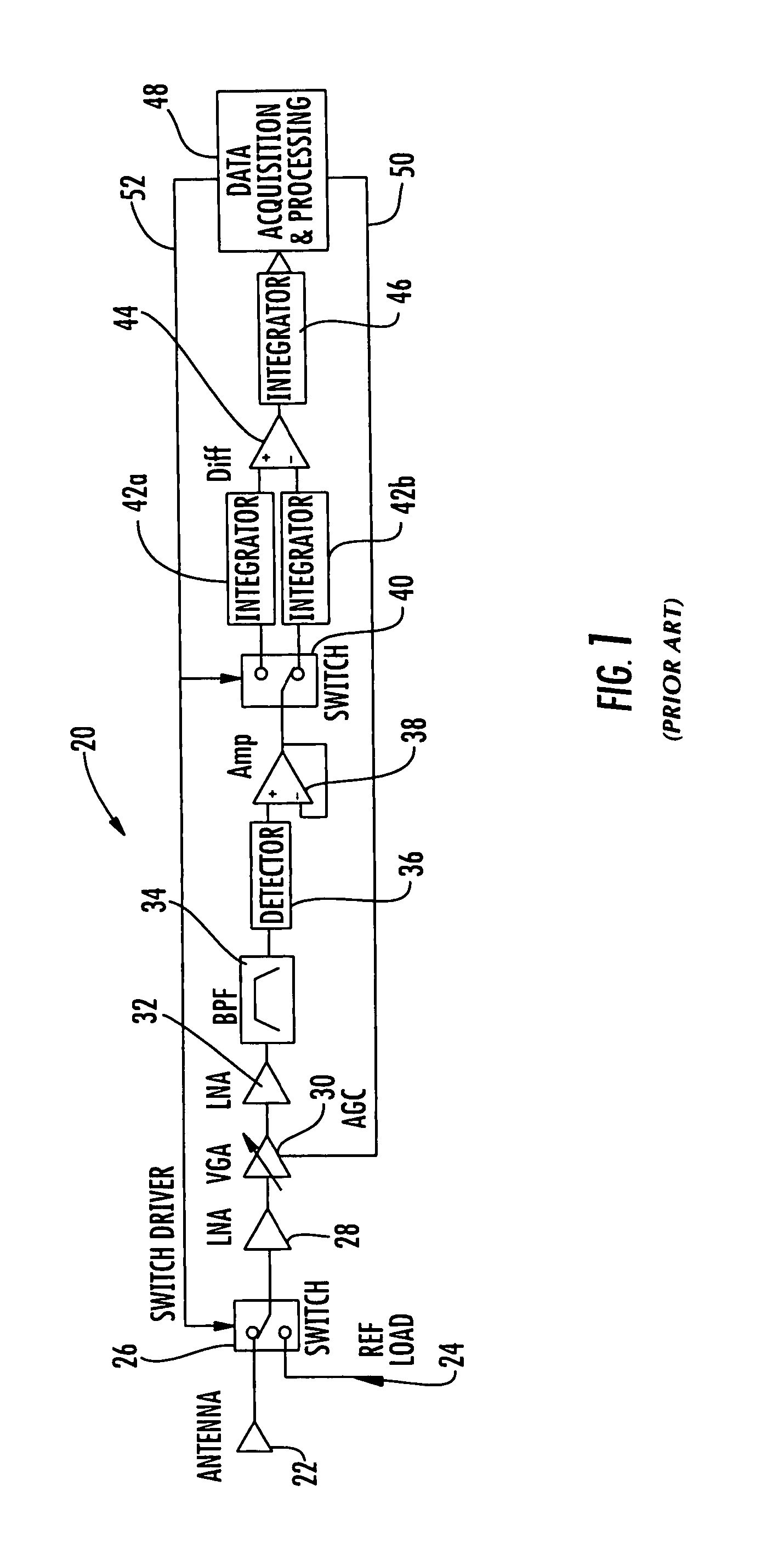Radiometer measurement linearization system and method
a linearization system and radiation measurement technology, applied in the field of radiation detectors, can solve the problems of poor image quality, limited sensitivity of existing radiometer designs, and limited to about 1 deg k, so as to reduce calibration requirements, improve the dynamic range of input signals, and eliminate sensitivity to gain variations.
- Summary
- Abstract
- Description
- Claims
- Application Information
AI Technical Summary
Benefits of technology
Problems solved by technology
Method used
Image
Examples
Embodiment Construction
[0030]The present invention will now be described more fully hereinafter with reference to the accompanying drawings, in which preferred embodiments of the invention are shown. This invention may, however, be embodied in many different forms and should not be construed as limited to the embodiments set forth herein. Rather, these embodiments are provided so that this disclosure will be thorough and complete, and will fully convey the scope of the invention to those skilled in the art. Like numbers refer to like elements throughout.
[0031]As known to those skilled in the arts, absorbance and transmittance measurements are typically performed with a light source. Transmittance is the ratio of light intensity before and after it enters a medium. Absorbance is the logarithm of transmittance. Applying these two principles to a radiometer system in accordance with one non-limiting example of the present invention can result in robust radiometeric sensing. Similar to optics, transmittance i...
PUM
 Login to View More
Login to View More Abstract
Description
Claims
Application Information
 Login to View More
Login to View More - R&D
- Intellectual Property
- Life Sciences
- Materials
- Tech Scout
- Unparalleled Data Quality
- Higher Quality Content
- 60% Fewer Hallucinations
Browse by: Latest US Patents, China's latest patents, Technical Efficacy Thesaurus, Application Domain, Technology Topic, Popular Technical Reports.
© 2025 PatSnap. All rights reserved.Legal|Privacy policy|Modern Slavery Act Transparency Statement|Sitemap|About US| Contact US: help@patsnap.com



